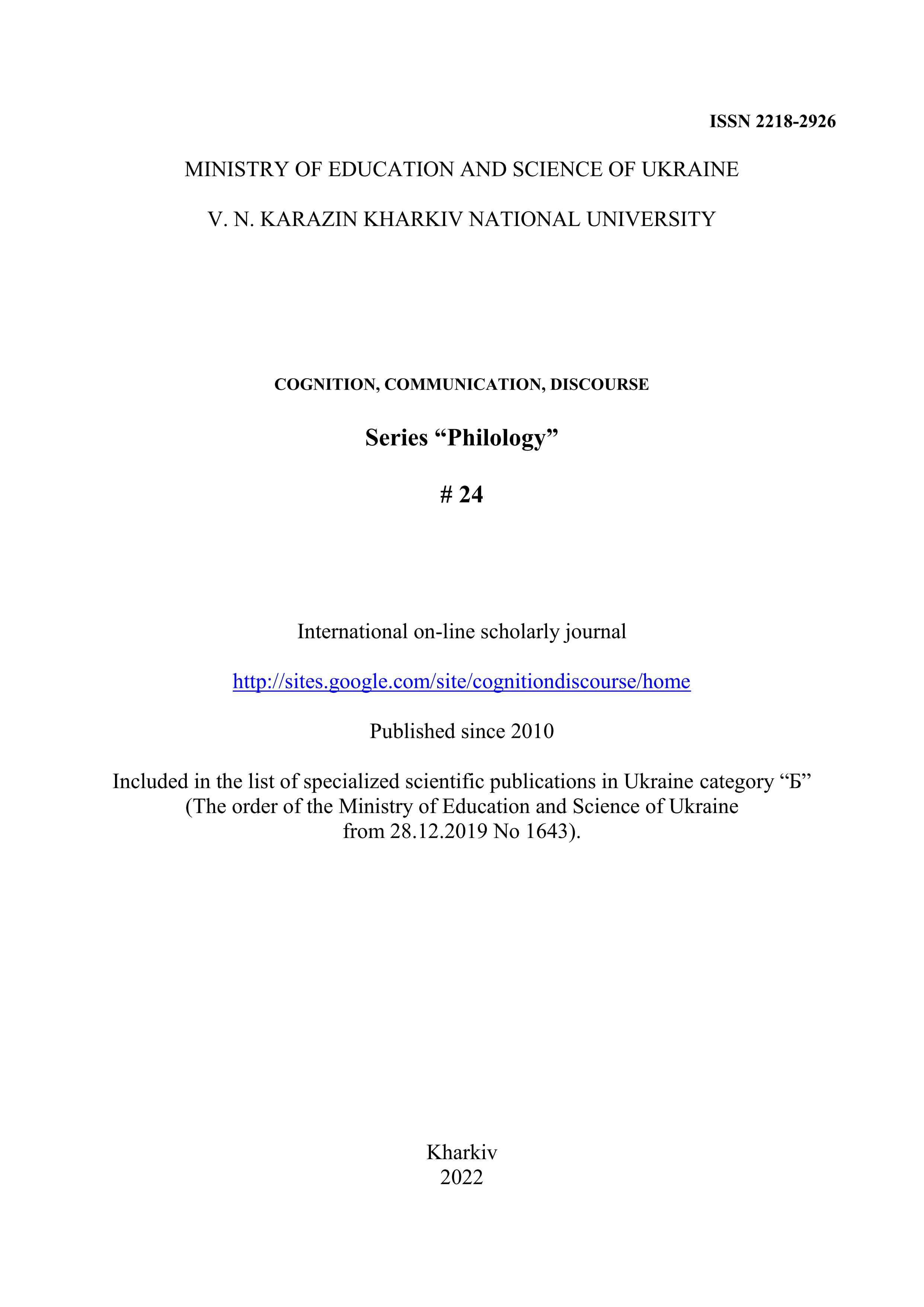Human trafficking and the modern slavery framing of the problem: Between rhetorical pathos and conceptual limitations
Abstract
Trafficking in human beings is a serious problem, which affects vulnerable groups disproportionately. Eastern European countries are among the most affected due to a variety of risk factors. Yet this problem often remains invisible to the mass public. The attempts to bring it into the public consciousness rely strongly on different rhetorical strategies. I argue that the way of social issue framing largely determines its public perceptions and reactions to it. This material examines human trafficking as phenomenon, its definitions and root causes, and then focuses on the framing of trafficking as modern slavery. This framing is made possible by the use of multimodality in media outlets and in prevention campaigns. I will apply the method of content analysis of images used in the Bulgarian digital press or for campaign purposes. The combination of text and imagery is a powerful tool to create the association of slavery, detention, and captivity. These associations are emotionally contagious and can generate pathos; they also convey the idea of a powerless innocent victim in need of rescue, which is a limiting view. The paper argues that this approach has both its positive and negative aspects, the latter being the risks of reductiveness and barriers to the deeper understanding of the problem, its underlying causes, and possible solutions. The alternative framing of this phenomenon as a human rights violation implies the necessity of not just “rescue and salvation” of individuals, but also structural changes in society.
Downloads
References
Bateson, G. (1972). Steps to an ecology of mind: Collected essays in anthropology, psychology, evolution and epistemology. San Francisco, CA: Chandler.
Bateman, J. A. (2014). Text and image: A Critical introduction to the visual/verbal divide. Abingdon: Routledge.
Bell, P. (2001). Content analysis of visual images. In T. van Leeuwen, & C. Jewitt (Eds.), Handbook of visual analysis (pp. 10-34). London: SAGE Publications.
Bitzer. L. (1968). The Rhetorical situation. Philosophy and Rhetoric, 1, 1-14. Retrieved June 1, 2022, from: http://www.arts.uwaterloo.ca/~raha/309CWeb/Bitzer(1968).pdf
Brysk, A. (2012). From rhetoric to rights: Global response to human trafficking. Program on human rights. Retrieved June 261, 2022, from
https://fsi-live.s3.us-west-1.amazonaws.com/s3fs-public/BriskL__Final_06_18_12.pdf
Christie, N. (1986). The ideal victim. In E. Fattah (Ed.), From crime policy to victim policy. Reorienting the justice system (pp. 17-30). London: The MacMillan Press Ltd.
FATF-APG (2018). Financial flows from human trafficking, FATF, Paris, France. Retrieved 01.07.2022 from: https://www.fatf-gafi.org/media/fatf/content/images/Human-Trafficking-2018.pdf
Greene, L.D. (2001). Pathos. In Sloane, Т. (Ed.), Encyclopedia of rhetoric (pp. 554-569). Oxford: Oxford University Press.
Gobierno de México. (2016). ¿Es correcto decir trata de blancas? Debemos referirnos a trata de personas. [Is it correct to say white slavery? We must refer to human trafficking]. Retrieved June 1, 2022, from https://www.gob.mx/segob/es/articulos/trata-de-blancas?idiom=es
Herrick, J. (2012). History and theory of rhetoric: An introduction. (5th ed). Boston, MA: Pearson.
ILO & Walk Free Foundation (2017). The Global Estimates of Modern Slavery. Geneva, Switzerland: ILO. Retrieved June 22, 2022, from https://www.ilo.org/global/publications/books/WCMS_575479/lang--en/index.htm
ILO (2012). 2012 Global Estimate of Forced Labour. Geneva, Switzerland: ILO. Retrieved 22.06.2022 from https://www.ilo.org/global/topics/forced-labour/publications/WCMS_182004/lang--en/index.htm
Karamanos, G. (2018). Mass violence and Christie’s ideal victim: A critical analysis. Manchester Rev. L. Crime & Ethics, 7, 49-61. Retrieved June 22, 2022, from https://www.researchgate.net/publication/341344659_Karamanos_G_2018_Mass_Violence_and_Christie's_Ideal_Victim_A_Critical_Analysis_Manchester_Rev_L_Crime_Ethics_7_p49
National Commission for combating Trafficking in Human Beings (2021). Annual report for 2020. Retrieved 01.04.2022 from https://antitraffic.government.bg/en/about#publications
Petrova, D. (2015). Die Rückkehr von Opfern des Menschenhandels – Der Fall Bulgarien [The return of trafficked persons – The case of Bulgaria]. In Menschenhandel in Deutschland – eine Bestandsaufnahme aus Sicht der Praxis (pp. 207-212). Berlin: KOK. Retrieved June 12, 2022, from https://www.kok-gegen-menschenhandel.de/fileadmin/user_upload/medien/Publikationen_KOK/KOK_Buch_Menschenhandel_BLICK_INS_BUCH.pdf
Pflaeging, J., & Stöckl, H. (2021). The rhetoric of multimodal communication. Visual Communication, 20(3), 319-326. Retrieved June 1, 2022, from https://doi.org/10.1177/14703572211010200
Protocol to Prevent, Suppress and Punish Trafficking in Persons Especially Women and Children, Supplementing the United Nations’ Convention against Transnational Organized Crime (2000). Retrieved June 3, 2022, from https://www.ohchr.org/en/instruments-mechanisms/instruments/protocol-prevent-suppress-and-punish-trafficking-persons.
Schwöbel-Patel, C. (2018). The “ideal” victim of international criminal law. The European Journal of International Law, 29(3), 703-724. https://doi.org/10.1093/ejil/chy056
Stöckl, H. (2019). Linguistic multimodality – multimodal linguistics: A state-of-the-art sketch. In J. Wildfeuer et al. (Eds.), Multimodality: Disciplinary thoughts and the challenge of diversity (pp. 41-68). Berlin: De Gruyter.
Turnbull, N., & Broad, R. (2022). Bringing the problem home: The anti-slavery and anti-trafficking rhetoric of UK non-government organizations. Politics, 42(2), 200-215. https://doi.org/10.1177/0263395720962402.
Copyright (c) 2022 Petrova Donka

This work is licensed under a Creative Commons Attribution-NonCommercial-NoDerivatives 4.0 International License.
Authors, who publish with this journal, accept the following conditions:
The authors reserve the copyright of their work and transfer to the journal the right of the first publication of this work under the terms of the Creative Commons Attribution License (CC BY), which allows other persons to freely distribute a published work with mandatory reference to the authors of the original work and the first publication of the work in this journal.
Authors have the right to enter into separate additional agreements for the non-exclusive dissemination of the work in the form in which it was published by this journal (for example, to post the work in the electronic institutions' repository or to publish as part of a monograph), provided that the link to the first publication of the work in this journal is given.
The journal policy allows and encourages the authors to place the manuscripts on the Internet (for example, in the institutions' repositories or on personal websites), both before the presentation of this manuscript to the editorial board and during review procedure, as it contributes to the creation of productive scientific discussion and positively affects the efficiency and dynamics of citing the published work (see The Effect of Open Access).




